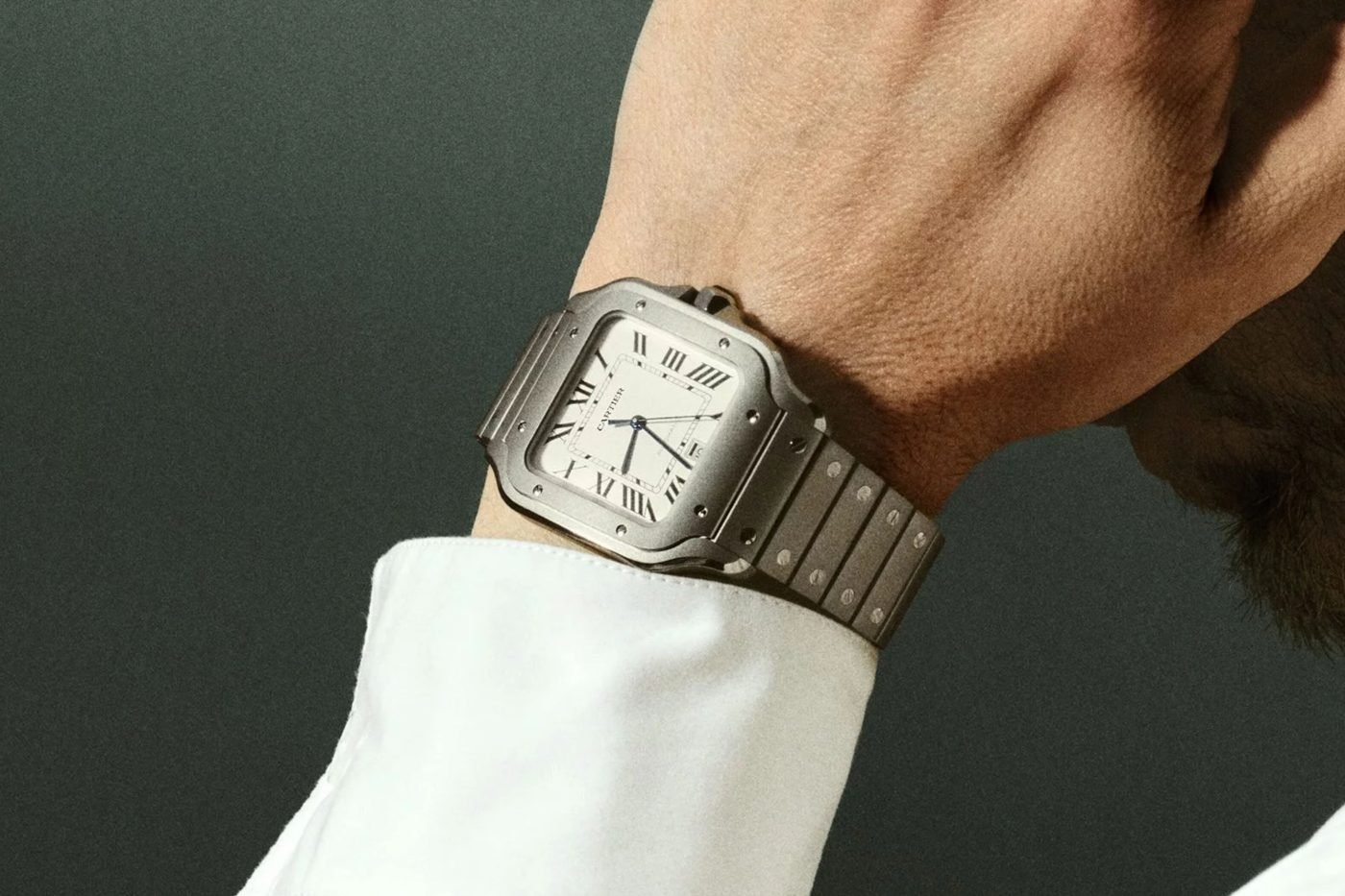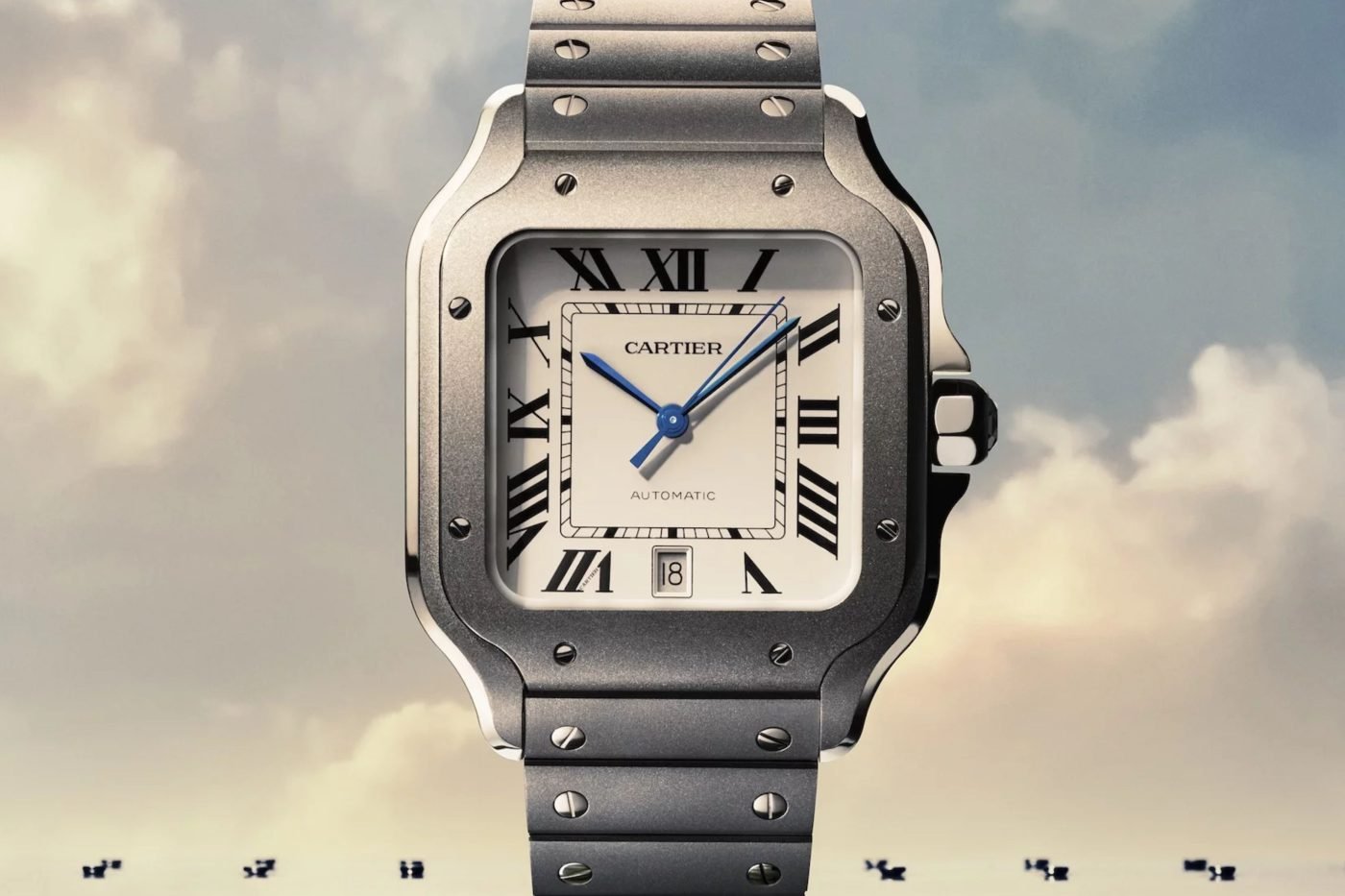- Cartier revives the legendary Santos with a lightweight titanium case.
- The finish balances tool-watch toughness with Parisian elegance.
- Titanium enhances comfort, durability, and modern sophistication without losing the Santos’ soul.
By now, you should have all heard the story of Louis Cartier and his friend, the Brazilian pilot, Alberto Santos-Dumont.
It’s 1904 on the streets of Paris, and a pioneering aviator complains to a young watchmaker about fumbling for his pocket watch mid-flight. Louis listened, thought, and then quietly made history, creating what would become the world’s first modern wristwatch.
A square case. Exposed screws. A leather strap. At a time when men clung to pocket watches like they were heirlooms, Cartier had the boules to put time where it belonged: on the wrist.
Curated news for men,
delivered to your inbox.
Join the DMARGE newsletter — Be the first to receive the latest news and exclusive stories on style, travel, luxury, cars, and watches. Straight to your inbox.
Fast-forward to today and Cartier has once again managed to keep that original spirit alive while sharpening the edges, perfectly presented in titanium. And we absolutely love it.

Now, there are some amongst you who, similar to credit card users, prefer a timepiece that makes a wealthy noise when it connects with a surface.
But titanum is lightweight yet strong, corrosion-resistant, hypoallergenic, and visually striking. It’s a material that allows Cartier to push this horological icon into the modern era without sacrificing comfort or durability. Which, for a Santos, a watch that can attract more scratches than a lotto card, is a tangible improvement.
High-end watchmakers love titanium because it signals technical sophistication as it’s harder to machine and finish than steel. It might not weigh anything, and it certainly won’t thud in the same way as steel, but for those in the know, this mooted, bulky, brushed material reflects advanced engineering and skill. Which is worth its weight in gold.

Of course, Cartier being Cartier, the execution is flawless. The brushed finish gives the case a tool-watch sensibility, but the bevelled edges and signature polished bezel screws remind you that this is still Parisian design through and through.
Whilst the feel will undoubtedly be different, the dial is still classic Santos: Roman numerals, sword hands, and that railway minute track that’s been marching around the case for over a century. It feels fresh, without betraying its roots.
And that’s the real magic trick of the Santos. For a watch that predates commercial aviation, it’s aged better than almost anything else on the market. It’s a design so confident, so inherently Cartier, that it never needed fixing, and still remains to this day one of the world’s most iconic timepieces. It just needs the occasional evolution.

